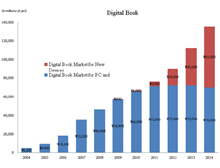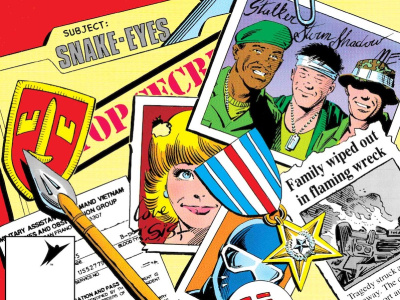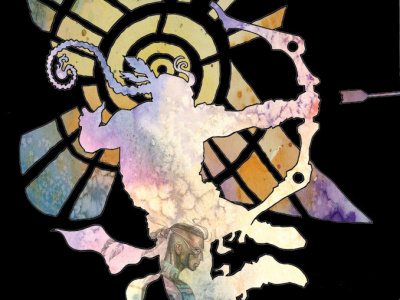
Because of the popularity of manga on mobile phones, the market for digital comics in
Can you provide an estimate of the size of the market in
We estimate the total market at about 55 billion yen (about $654.5 million).
What is your estimate for the total digital book market (including manga) in
We estimate that at 67 billion yen (about$797.3 million).
What do you forecast for the total digital market for2011?
We estimate that is will reach 76 billion yen ($904.4 million)
Can you compare 2010 with 2009—what is your estimate of the current growth rate?
We estimate that there will be about a 16% growth rate in mobile manga downloads and about a 20% increase in digital downloads for new devices like the iPad.
You indicated that growth was slowing—what was the growth rate between 2008 and 2009?
The growth rate for mobile phone downloads is slowing. It was just over 30% between 2008 and 2009.
Do you see this trend continuing?
Yes, we see the digital market for PCs and phones growing by just 7% in 2011, then by just 1.4% in 2012, and actually declining slightly in 2014. But we see exponential growth during the same period for the digital market for new devices, which we estimate will grow by a factor of five in 2011,then more than triple in 2012, and more than double in 2013, before it achieves near parity with the PC and phone portion of the market in 2014.
What share of digital publishing in
It is said that 89% of the digital publishing is derived from manga.
What is Bitway’s share of the market?
We have two lines of business for mobile manga. One is the wholesale business of digital manga to other mobile online retails and the other is our direct mobile retail business. As for the wholesale business, our revenue accounts for 70% of the market and as for the retail business, our retail accounts for 20% of the market which makes us one of the top three retailers in the Japanese mobile market.
Has the iPad (or other tablet computers) made a difference in the market? Is Bitway and/or any of the publishers you represent developing new sorts of higher resolution downloads to take advantage of the greater visual capabilities of such devices?
Many publishers now have a different view towards digital publishing since with higher resolution devices they can show their content by page and also, like many publishers in the
Does the typical manga download consist of a chapter, the same amount of content as the typical installment (or chapter) of a title that appears in a manga anthology magazine?
It depends on titles and publishers’ policy; however, most publishers provide a file with the same length of a chapter and some publishers with half the length or less.
When does the content of a major manga title go digital—at roughly the same time that it appears in an anthology magazine, when the tankoubon collection is published, or after those events in order to preserve sales on paper? Is there a uniform standard, or does this vary by title?
It varies by title. For most major titles, the digital release date is usually later than the tankoubon release. However, more and more publishers are changing the release timing for digital. Some innovative manga labels have released their titles digitally before their release as published comics. Some even do not care about publishing in print but focus solely on digital publishing. With a good execution, digital brings better profit with less cost for print, logistics, and less risk for inventory.
What is the average cost of manga digital download?
The pricing of a digital manga ranges from 10 yen to 100 yen per file but the average cost is about 40 yen per file (editor’s note, the current rate of exchange is about 84 yen per dollar).
How does the cost of reading a manga on a digital device compare with buying the tankoubon collection of the same material?
For mobile distribution in Japan, usually the price of digital manga files would add up to just about the same cost of tankoubon or little higher, but for new devices as iPad and iPhone, many publishers have shown their policy to discount the price when compared with the price of tankoubon.
Is piracy or illegal sharing of downloaded files a problem?
It surely is a big problem for publishers and authors of manga. Some may say that by sharing files of manga, increases the level of recognition for unknown titles. However, for major hit titles, it is a great loss of sales opportunity. However, I believe that free streaming could definitely be used as an official promo approach for many titles by the publishers in order to increase awareness.
Can you provide a list of the top manga publishers that Bitway represents?
In alphabetical order, Kadokawa, Kodansha, Shogakukan, Shueisha, Square Enix, and most other major publishers. We now represent more than 300 publishers in total.
Recently Square Enix and Itochu announced plans to expand into the North American market—what are your plans for the
We are working with the digital comic association which includes about 40 Japanese publishers to build a manga portal for the
The other companies I mentioned are planning to sell manga downloads here, have you decided how Bitway plans to monetize digital transactions here? Are you considering subscriptions or ad-supported streaming?
Both. Also, we’re planning to provide publishers with a platform which would help publishers to monetize their manga properties by various approaches (see “Crunchyroll Fashioning Digital Distribution Platform”).
Bitway made an investment in the San Francisco-based Crunchyroll; can you explain the nature of the relationship between the two companies?
Crunchyroll has a great user base of anime fans and we’re hoping that we could complement each other’s strength to attract manga fans outside of
Do you have any plans to acquire any other
Not at the moment.
In the North American market will the publishers that you represent in
I’m afraid I do not have answers to this question, but I believe that many publishers will look for different channels to increase their sales opportunity during this chaotic phase especially for digital manga publishing.
What differences do you see between the Japanese and American markets? When do the Japanese read manga on their digital phones most often? Is it when they are commuting on trains?
That’s exactly what we expected to find when we started, but most often people read manga on mobile during their bed time. Our user traffic peak is around midnight.
Do you see digital publishing of manga as the electronic rendering of what is on the printed page, or do you think that it will develop into some sort of hybrid form like “motion comics” with animated elements, voiceovers, and soundtracks? Are “motion comics” popular in
We’ve provided “motion comics” type of digital manga in the past but we weren’t as successful as when we provided the regular mobile manga because of the higher cost for production than the regular ones. Also, the nature of manga for many Japanese, what people expect from it is more about the story and not so much about how it would look and sound fancy. However, with the emergence of tablet PCs and such devices, I think colored comics would be a nice additional feature to have especially for users outside of








